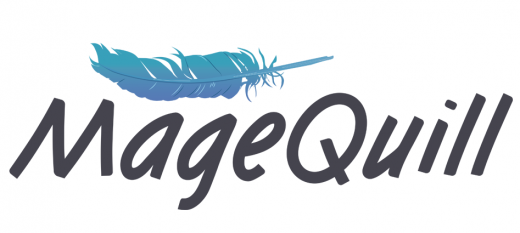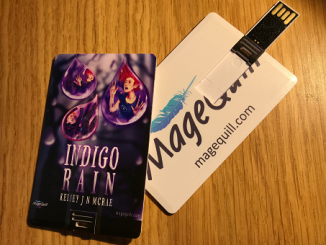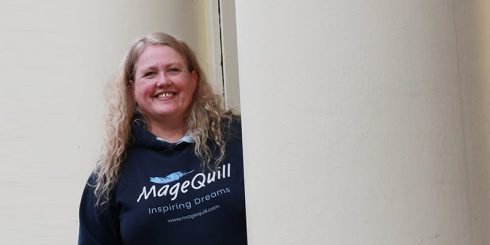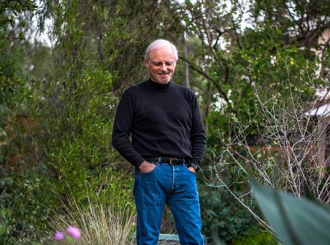Creativity 5.0: When human ideas lay the foundation of a better world carried out and improved by technology.
by TheCat · Published · Updated
Authors
Marianne Rugard Jarvstrat and Niklas Järvstråt
Abstract
Building on the established societal phases 1.0 through 5.0, parallels are drawn to corresponding phases of human creativity. In particular, Creativity 5.0, the phase following the currently dominating Creativity 4.0 will to a dramatically larger extent involve collaboration by idea creators with experts in fields relevant to the idea. This collaboration is made possible by the evolution of AI information search engines to encompass also competence search and thus connecting networks of experts with ideas and practices evolving in or near their field of expertise and interest. Ideas will thus be cross-fertilised and spark additional ideas, thus perpetuating an environment much more inducive to creativity than the current system of peer-review and reference to sources before proceeding with assessment if an idea is viable.
Introduction
“Once upon a time there was a young boy who loved bees. Bees were his all and everything. He made stories about them, he made small houses for them, and he had an eclectic collection of bee related items – from the ephemeral to the eternal, from the weird and wonderful to the normal, from bee covers to bee games. If it was related to bees, this young lad was interested and carefully and passionately recorded it, kept it and played with it.
As he grew older and became a lad, ready to take his education to the next level, he wanted to study more about bees. Find the sacred knowledge he had not yet found, think the thoughts he had not thought. There was very little he could study and essentially no one had ever made money on being modest beekeepers, however an eclectic collection they might have. Our lad therefore left his bees behind and instead studied more useful subjects such as IT and biology.
The lad became a man: a man full of commitments, involvement in society and thoughts. He never forgot his bees, or the passion, but his collection was hidden away on a shelf in the far side of his attic. They were useful only in his mind and taken out on the sly when he was feeling down and wanted to find that bit of passion that he had tried to forget. Even though the things were tucked away, the internet did allow him to connect with others who loved bees.
Days became years, and years became decades. The visits to the attic and the bees became less and less frequent but the interaction with his bee-loving community online continued. The thoughts also faded, though he did follow the news about the loss of bees due to pesticides. He read and pondered over these stories and feared for the bees. He wondered why people had spent so much time with machines yet never really looked at how they could solve the problems of the bees. People said bees were important, but why had it not been solved, and why were his beloved bees dying in droves?
Suddenly one day, years on while discussing ideas with a friend over lunch and how they had been kept alive and indirectly nurtured through collective communities and global interest groups, he realised what he had known all along: the covers he had made for the bees while just a young lad. They were the answer. His friends had laughed and called him crazy back in the old days when ideas did not matter. Why would the bees need a cover? Had it been ignored because he was young and not good enough at explaining? Did he not know bees better then? Why had he hidden his ideas, his wonderful stories and innovations away in the attic when he had had the answer all along? He shook his head. He was still in the old days, when people feared sharing their ideas and collaborating. There really was no reason not to collaborate but in those days, people were afraid that machines would take the jobs. Funny really that he had not looked at what was happening today.
He quickly went to his online bee community and put a brief plan together. The seed that was sown all those years ago and a combination of his reignited passion, the creative answers and the new technology available to tailor an environment that is more suitable for individual bees using modern technology merged with his friends’ ideas about heat conservation and micro-control actuators, and became a solution that would save the bees. A passion had been reignited, not just for him, but for a wider community of bee enthusiasts, insect specialists and into a somewhat esoteric group exploring novel ideas for sustainable buildings. The ideas were rolling in and a creative path was paved with the help of technology to save the bees and the quality of man and beast at large. It was not just his thoughts, but the combined thoughts. In old days they used to put computer power together to make machines do everything, but they forgot man; the ideas, the thoughts, and the collaborative approach to problem solving – not just problem solving but making life a better place.”
This story, in its rather simplistic way, shows the importance of creativity and how, nurtured over time, it can make a difference to our world. Creativity has always been part of our lives and has taken a journey alongside societal changes.
Society 1.0 to 5.0
There is consensus that we are presently living in Society 4.0, with Society 1.0 being a hunter gatherer society, Society 2.0 being agricultural, Society 3.0 industrial and the present 4.0 focussing on information technology.

Figure 1: Society 1.0 to 5.0. (Source: Cabinet Office Japan, 2018
Among the first to formulate a clear vision of what will follow after Society 4.0 were Hitachi researchers (Yuko Harayama, 2017) working under Japanese government contract. Their conclusion was that the Society 4.0 is drawing to a close and will soon be replaced by a more human-centred society that they called Society 5.0. We consider this a likely scenario and as a corollary of Society 5.0 conjecture that creativity will evolve and take a more central role in society. Society 5.0 is alternatively labelled “Human-centred society” or “Super smart society”. We feel that human-centred is a more descriptive term than super smart and will thus adopt that term. This period is also sometimes called “The Imagination Society”.
This change is likely to happen, yet the collaboration between man and AI is just the process; the distinguishing element, which has often been neglected is creativity. In the past, creativity was the bridge and also the seed that allowed many of the societal changes, though the changes were more focused in other areas, such as allowing us to survive (collaborative efforts allowed us to survive when hunting), eat (improve agriculture), produce goods (industrial revolution) and learn more (information technology).
Creativity versions and their connection to society
Creativity is a major part of ideas, though it needs to be useful or have an application. The ideas are defined by stories, whether these are books, innovations or artistic expression. There is a story everywhere, and stories are an essential part of the survival of ideas. These stories subsequently become integral components of paradigm shifts. For example, the shift from Society 2.0 to Society 3.0 was sparked by the enlightenment era where philosophy and thought encouraged the human and societal approach to creativity from a more singular conceptualisation of a chain of events or thought into a more structured theory construct. We believe this change in approach to ideas (from Creativity 2.0 to Creativity 3.0) came before the more obvious societal shift we call the industrial revolution and being the transition from Society 2.0 to 3.0. Likewise, Creativity 3.0 allowed a paradigm change in how theorising was able to change innovations from more one dimensional into multidimensional peer reviewed microcosm allowing for Creativity 4.0, which paved the way for our entering the Information Society or Society 4.0.
Table 1: Society paradigms and related Creativity paradigms

These changes in the approach to creativity were gradual and slow, and even though looking back we were able to identify specific events that allowed these changes, then they were nevertheless slow and reluctantly adopted. One reason for such reluctance was the lack of understanding, another was people’s fear of change, and a last and probably most important one was that our culture encourages reflecting and benchmarking against what has happened, rather than what might or will happen. The future is seen as risk, risk is seen as failure, and failure is seen as bad. It is worth mentioning that all the instrumental changes that led to the next society were not accepted as good until they became the status quo. Also, the changes happened over time and were rarely led by one singular event. A reason for this is that new ideas are chaotic and that it takes a while for a new idea to become robust, accepted, and embedded in current practice, especially when a strong emphasis is put on not failing. The changes did happen though because somebody was creative, somebody failed, and somebody – whether individually or collectively – failed and wanted something better. Creative new ideas are often fun, but it does take time to ensure that the creative ideas are matured. Part of maturing is also becoming ethically mature and making sure that the new front running idea or concept is good for all and not just the early adopters.
Whatever the change and whatever the cause, creativity has been instrumental throughout all the societal changes though it is only in the later developments that creativity can be taken out as a separate part. Earlier we did not have the time, the energy, or the focus to be able to do that. We kept evolving but the intent of our focus had been on the job at hand, whether that was finding a safe way to stay alive or to mass-produce medicine or cereals so that we would be able to have a better quality of life.
In the early societies, learning and sharing knowledge were important, while in Society 4.0, education and knowledge had become essential also as a sign of success. To reach that state, AI is very helpful. Because of AI, we were able to avoid repetitive tasks, and have more time and resources for keeping healthy, living longer and having more energy. Society 4.0 allowed us to get knowledge and information at our finger tips, although we have not yet learnt to see creativity as a separate, robust part of our development. Fear kicks in and rather than seeing robots as relieving us from hardship, they are viewed as threats to jobs. Having less hardship allows us to use our minds more – enjoy more knowledge _ and have less stress on our mind and our body, thus enabling us to apply our minds and create jobs fulfilling higher and higher needs in the Maslow pyramid. There are many studies that confirm that stress not only breaks us down physically but also mentally. Technology is changing how we interact and allows more global open relationships.
Creativity 5.0
Creativity 5.0 is thus more than just peer reviewed efforts, unleashing collaboration in a completely different and much more effective form. Peer-reinforced ideas will add the extra dimension of AI-supported peer connections and rather than simple reviews, open up for in-depth discussions and collaborative improvements, making progress together with peers and alongside machines in a way that can improve and enhance the life and sustainability of man. Though the outcome, the need and the direction are identified, a robust collaboration is still forming.
Concluding remarks
Creativity is spoken about, yet we are still working to standards of a previous society, while trying to adapt to those of the new one. The generation now entering the work cycle after having lived and interacted with technology throughout their entire creative youth, do not fear technology, and are looking for a creative outlet, having managed and interacted with technology all their lives. Technology for them is not something that has to be taught, it is a tool. It is now possible to start looking ahead of further needs which includes creativity as part of daily lives and fulfilment.
Creativity 5.0 will improve the way we express, collaborate over and develop ideas, processes and actions on the basis of machine working in conjunction with mankind as a whole and where each individual works within a supportive community with similar aims to fulfil creative endeavours for the greater good of the global society. It is the flourishing, nurturing and holistic part of expression, opening up to new thoughts that are developing innovations over time allowing for collaborative, multi-dimensional idea constructs, assisted by technology. It will be the founding basis of Society 5.0.
The integration of AI into Society 5.0 will be successful because creativity is at the top of Maslow’s triangle of needs, and for most people today and increasingly so, the lower levels are satisfied. Maslow (A H Maslow, 1971, 1999) saw creativity as a part both separate and integrated with Self-Actualisation, necessary to be a whole being though not dependent on wellness of mind or conventional endeavours. This is the case even if there are inequalities in society and further alignments need to be made.
Unleashing of creativity in Society 5.0 follows on from the role played by creativity during the previous societies. It too has matured and is now ready to take centre stage for development and wellbeing. In each societal shift there was a corresponding shift in creative thought process and development. Indeed, creativity has been a driving force in particular during the societal paradigm shifts, and this is an increasing trend that will become even more important in Society 5.0 with the changes Creativity 5.0 are bringing to bear.
Now, according to established practice in Creativity 4.0, the ideas of this article should be complemented by a thorough description of relevant thoughts that have gone before it and could be seen as building blocks and relevant knowledge background for the interested reader. However, in the spirit of Creativity 5.0, we hereby offer the idea for scrutiny, and will welcome thoughts on context, enhancements and applications for future versions or follow-on articles.
References
Y. Harayama, 2017, Society 5.0: Aiming for a New Human-centered Society: Japan’s Science and Technology Policies for Addressing Global Social Challenges, Hitachi Review Vol. 66, No. 6 558–559
Cabinet Office, Government of Japan, Society 5.0, https://www8.cao.go.jp/cstp/english/society5_0/index.html, accessed 2019-02-05
H Maslow, Towards a psychology of being, 3rd ed (New York: John Wiley & Sons, 1968, 1999)











